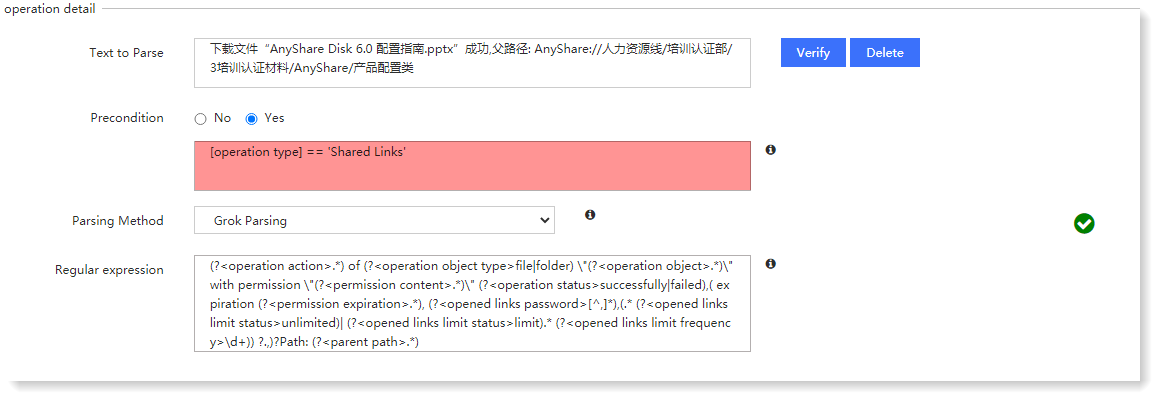Updated at: 2022-12-09 03:49:50
It is a rule before each layer of parsing to provide a restriction for that layer of parsing, and is to resolve scenarios where some fields may not be available in similar logs and global parsing in such scenarios may result in inaccurate parsing.
After the precondition is enabled, the parsing of the layer of log is allowed only if the precondition is Yes. The configuration parameters are as follows:
_84.png) Note: Before precondition verification, make sure the condition object field in precondition has been parsed and extracted.
Note: Before precondition verification, make sure the condition object field in precondition has been parsed and extracted.
 The precondition consists of 2 parts: condition object and operator:
The precondition consists of 2 parts: condition object and operator:
• Condition Object Type: • Operator: Represent the relationship between condition objects. There are the following operators:
After the precondition is enabled, the parsing of the layer of log is allowed only if the precondition is Yes. The configuration parameters are as follows:
_84.png) Note: Before precondition verification, make sure the condition object field in precondition has been parsed and extracted.
Note: Before precondition verification, make sure the condition object field in precondition has been parsed and extracted. The precondition consists of 2 parts: condition object and operator:
The precondition consists of 2 parts: condition object and operator: • Condition Object Type: • Operator: Represent the relationship between condition objects. There are the following operators:
< Previous:
Next: >

















